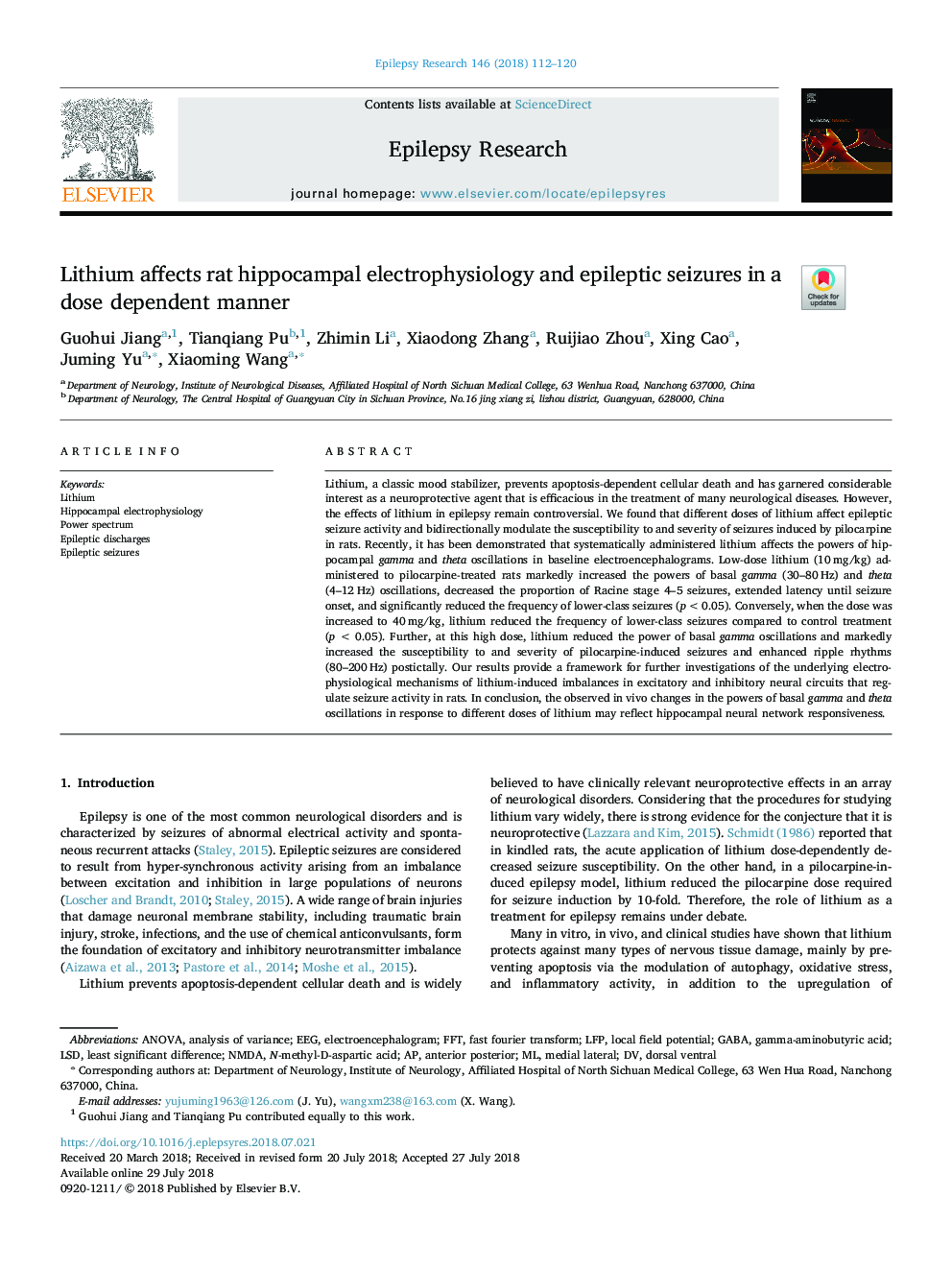| Article ID | Journal | Published Year | Pages | File Type |
|---|---|---|---|---|
| 8684013 | Epilepsy Research | 2018 | 9 Pages |
Abstract
Lithium, a classic mood stabilizer, prevents apoptosis-dependent cellular death and has garnered considerable interest as a neuroprotective agent that is efficacious in the treatment of many neurological diseases. However, the effects of lithium in epilepsy remain controversial. We found that different doses of lithium affect epileptic seizure activity and bidirectionally modulate the susceptibility to and severity of seizures induced by pilocarpine in rats. Recently, it has been demonstrated that systematically administered lithium affects the powers of hippocampal gamma and theta oscillations in baseline electroencephalograms. Low-dose lithium (10âmg/kg) administered to pilocarpine-treated rats markedly increased the powers of basal gamma (30-80âHz) and theta (4-12âHz) oscillations, decreased the proportion of Racine stage 4-5 seizures, extended latency until seizure onset, and significantly reduced the frequency of lower-class seizures (p < 0.05). Conversely, when the dose was increased to 40âmg/kg, lithium reduced the frequency of lower-class seizures compared to control treatment (pâ<â0.05). Further, at this high dose, lithium reduced the power of basal gamma oscillations and markedly increased the susceptibility to and severity of pilocarpine-induced seizures and enhanced ripple rhythms (80-200âHz) postictally. Our results provide a framework for further investigations of the underlying electrophysiological mechanisms of lithium-induced imbalances in excitatory and inhibitory neural circuits that regulate seizure activity in rats. In conclusion, the observed in vivo changes in the powers of basal gamma and theta oscillations in response to different doses of lithium may reflect hippocampal neural network responsiveness.
Keywords
Related Topics
Life Sciences
Neuroscience
Neurology
Authors
Guohui Jiang, Tianqiang Pu, Zhimin Li, Xiaodong Zhang, Ruijiao Zhou, Xing Cao, Juming Yu, Xiaoming Wang,
